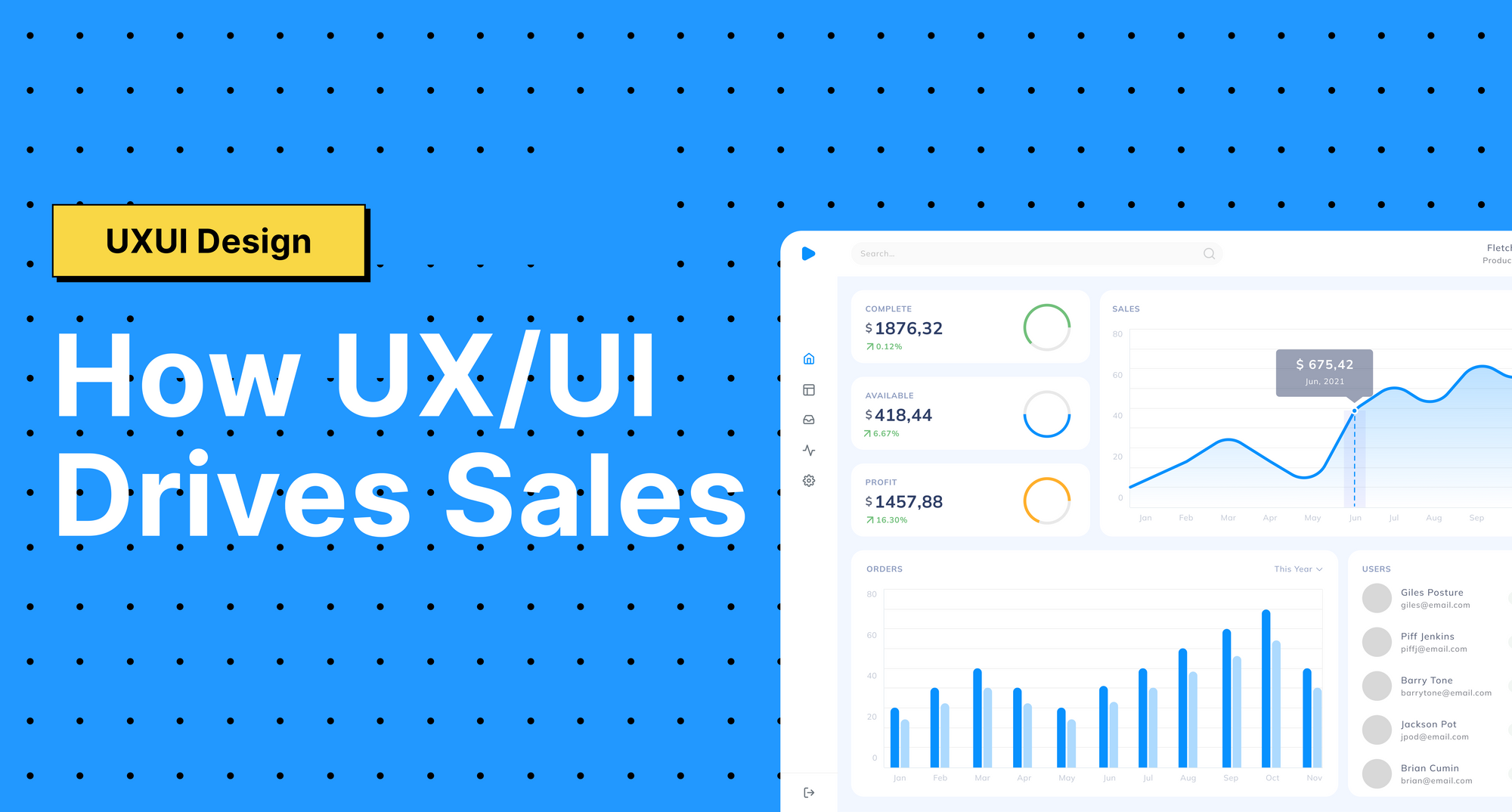Transform Your Business: The Untapped Power of UX/UI Design in Boosting Sales

Introduction
In today's digital-first world, the importance of a well-designed user interface (UI) and a thoughtful user experience (UX) cannot be overstated. For businesses looking to thrive online, investing in UX/UI is not just an option—it's a necessity. This is because the quality of UX/UI directly impacts a customer's journey, influencing everything from initial engagement to final sales. In this article, we explore the pivotal role UX/UI plays in driving sales, offering insights into why businesses should prioritize this aspect of their digital strategy.
Understanding UX/UI Design
What is UX?
User Experience (UX) refers to the overall experience a person has when interacting with a digital product or service. It encompasses a wide range of factors, including usability, accessibility, performance, design, utility, ergonomics, overall human interaction, and marketing. UX is about how easy or difficult it is to interact with the user interface elements that the UI designers have created.
What is UI?
User Interface (UI), on the other hand, is the look and layout of a digital product. It's about the presentation, the look and feel, and the interactivity of the product. A good UI creates an inviting and intuitive environment that guides users through a digital landscape. It's about using color schemes, button shapes, typography, animations, and imagery effectively to create a seamless and visually appealing digital experience.
The Interplay Between UX and UI
While UX and UI are distinct, they are deeply interconnected. UX design is a process, while UI is tangible. The best digital products marry great UI design with thoughtful UX practices, creating a seamless, intuitive, and engaging journey for the user. This harmony is crucial for driving sales as it directly influences conversion rates and customer loyalty.
How UX/UI Drives Sales
Simplifying the User Journey
A well-designed UX simplifies the user's journey to their destination. By minimizing the steps needed to complete an action—whether it's making a purchase, signing up for a newsletter, or getting in touch with customer service—UX/UI design can significantly reduce user frustration and drop-off rates. This streamlined path not only enhances the user's experience but also increases the likelihood of conversion, directly impacting sales.
Reducing Bounce Rates
Bounce rate—the percentage of visitors who leave a site after viewing only one page—is a critical metric for businesses. High bounce rates are often a symptom of poor UX/UI design, indicating that users can't find what they're looking for or are turned off by the design. By creating an intuitive and engaging UI, complemented by a satisfying UX, businesses can keep visitors on their site longer, increasing the chances of converting them into customers.
Boosting Conversion Rates
At the heart of UX/UI design is the goal of boosting conversion rates. This is achieved through various means, such as optimizing the placement of call-to-action (CTA) buttons, using persuasive design elements, and ensuring the checkout process is as seamless as possible. Good UX/UI design reduces the cognitive load on users, making it easier for them to make purchasing decisions and complete transactions.
Enhancing Customer Retention
Customer retention is crucial for long-term business success, and UX/UI design plays a significant role in achieving this. A design that prioritizes user needs and preferences encourages repeat visits and fosters loyalty. For instance, a user-friendly account management system, personalized recommendations, and timely support can make customers feel valued and more likely to stick around. This loyalty not only boosts sales through repeat purchases but also through referrals, as satisfied customers are more likely to recommend a business to others.
Improving Customer Satisfaction
Satisfaction is deeply intertwined with the user experience. A positive interaction with a well-designed website or application can leave a lasting impression, contributing significantly to overall customer satisfaction. This satisfaction comes from intuitive navigation, fast load times, and engaging content that meets the user’s needs and expectations. When businesses invest in UX/UI that accomplishes these goals, they see higher satisfaction rates, which are directly linked to increased sales. Satisfied customers are more inclined to convert and often at higher values.
Facilitating Personalized Experiences
In the era of digital marketing, personalization has become a key driver for sales. Effective UX/UI design allows for the integration of personalized experiences by leveraging user data to present relevant content, products, or services. This could mean tailoring the UI to show items based on past behavior, preferences, or even the user's location. Personalization enhances the user experience by making interactions feel more relevant and engaging, significantly boosting the chances of conversion.
Streamlining Mobile Experience
With the majority of internet traffic coming from mobile devices, the importance of a mobile-friendly UX/UI cannot be overstated. A design that is responsive and optimized for various screen sizes ensures that users have a positive experience regardless of the device they use. This is crucial for driving sales in a mobile-first world, where a poor mobile experience can lead to lost opportunities and decreased conversion rates. Streamlining the mobile experience involves considering touch interactions, loading times, and navigation to create a seamless experience for mobile users.
Incorporating Feedback Loops
An often overlooked aspect of UX/UI design is the incorporation of feedback loops. Allowing users to provide feedback directly within an app or website not only helps in gathering valuable insights but also makes users feel heard and valued. This can lead to improvements in the design that further enhance the user experience and, by extension, sales. Feedback loops can identify pain points in the user journey, leading to optimizations that remove barriers to conversion.
Conclusion
The role of UX/UI in driving sales extends beyond mere aesthetics. It is about creating a seamless, intuitive, and enjoyable experience that meets user expectations and needs. By simplifying the user journey, reducing bounce rates, boosting conversion rates, enhancing customer retention, and improving satisfaction, businesses can leverage UX/UI design as a powerful tool to drive sales. In the competitive digital landscape, investing in UX/UI is not an optional luxury but a critical component of a successful online presence. As businesses look to the future, prioritizing UX/UI design will be key to attracting, engaging, and retaining customers in a way that significantly impacts the bottom line.
This exploration into the significance of UX/UI design underscores its indispensable value in the digital marketing strategy of any business aiming to thrive online. By prioritizing UX/UI, businesses can ensure they not only meet but exceed customer expectations, paving the way for increased sales and sustained growth.

